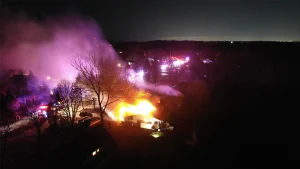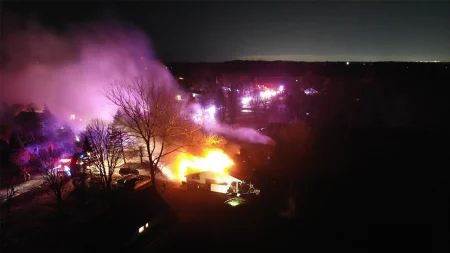Border Crossing Incident: Differing Accounts and Controversy
The federal criminal complaint regarding a recent border incident has presented a narrative that substantially differs from earlier statements issued by homeland security officials. According to this latest account, motorists allegedly rammed a vehicle operated by border patrol officers during the confrontation. The situation then escalated when, as claimed in the complaint, a federal agent discharged his weapon at a female driver who reportedly directed her vehicle toward him in a threatening manner. This version of events has raised questions about the initial characterization of the incident by homeland security authorities and highlights the often complex and contested nature of enforcement actions at the border.
The discrepancy between official accounts has drawn attention from civil rights advocates and immigration policy experts who emphasize the importance of transparency in border enforcement operations. The criminal complaint provides specific allegations that the motorists took aggressive action against law enforcement personnel, characterizing the incident as one where officers responded to an immediate threat to their safety. This portrayal stands in contrast to the previous homeland security statement, which apparently presented a less confrontational sequence of events. Such contradictions in official documentation raise important questions about the accuracy of initial reports and the protocols for public disclosure following use-of-force incidents involving federal agents.
The shooting of a motorist represents one of the most serious outcomes possible in law enforcement interactions, making the factual determination of what transpired critically important. According to the complaint, the agent fired when directly threatened by a vehicle being used as a potential weapon, a circumstance that often falls within use-of-force guidelines. However, without independent verification or body camera footage, these competing narratives create a challenging environment for determining accountability. The evolution of the official account also demonstrates how initial reports of violent confrontations can change significantly as investigations progress and more evidence becomes available to authorities.
The border region has long been a site of tension where enforcement policies, human rights concerns, and national security priorities intersect in complex ways. Incidents involving use of force at or near the border receive heightened scrutiny due to ongoing debates about immigration enforcement approaches and appropriate tactical responses by federal agents. The contradictory accounts in this case exemplify the difficulty in navigating these sensitive issues, particularly when official statements change in ways that materially affect public understanding of enforcement actions. Such inconsistencies can either reflect the natural progression of an investigation or raise concerns about potential after-the-fact justifications for use of force.
The role of vehicles in use-of-force incidents presents particular challenges for both law enforcement and judicial review. The complaint’s assertion that the motorist drove her vehicle at the agent frames the automobile as a deadly weapon, potentially justifying lethal force under many law enforcement policies. However, perceptions of vehicle movement and driver intent can be subjective and difficult to establish definitively after the fact. The evolution of this narrative from the initial homeland security statement to the more detailed federal complaint illustrates how crucial specific physical details become when determining the legality and propriety of an agent’s decision to discharge a firearm in the field.
Moving forward, this case will likely prompt calls for more consistent reporting standards and possibly expanded use of recording technology in border enforcement operations. The significant differences between the initial statement and subsequent criminal complaint demonstrate the challenges in providing accurate public information about rapidly evolving and potentially life-threatening situations. As the legal process continues, both the specific circumstances of this incident and the broader questions it raises about transparency, accountability, and appropriate use of force in immigration enforcement will remain important topics for public discussion and policy consideration. The outcome may influence not only this individual case but also how similar incidents are documented, investigated, and communicated to the public in the future.









